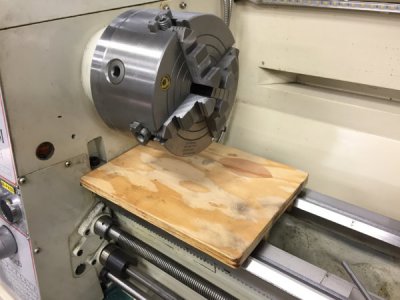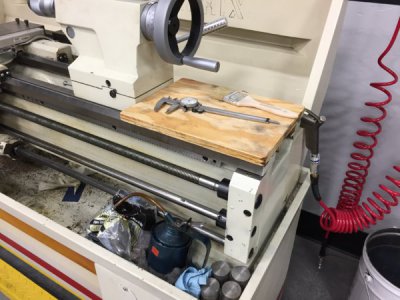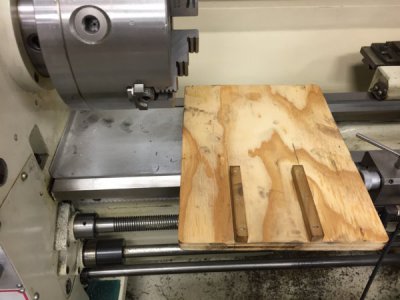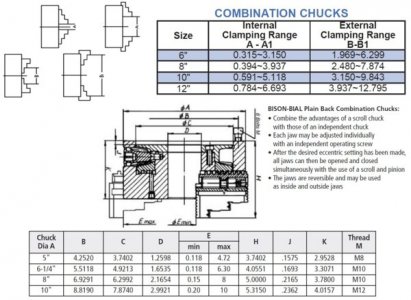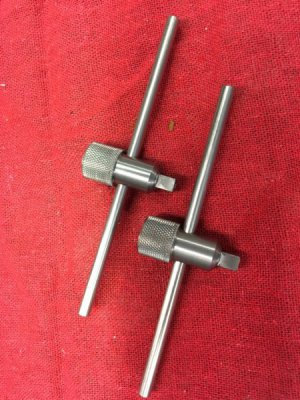Mikey is correct, just like a Set-Tru chuck but adjusting each jaw on a scroll mechanism instead of the chuck relative to the backing plate. Also a lot quicker then a Set-Tru to adjust. Still, a Set-Tru repeats very well, but there can be some variation depending on the size of the piece and also if the jaws are reversed, it usually requires readjusting the chuck TIR. In my experience, the sequence of tightening the Set-Tru bolts and chuck to the back plate is more critical to setting up the chuck. The combo is a piece of cake, relative to a Set-Tru, but a Set-Tru once set has better repeatability of the scroll.
So with a combination chuck each independent jaw moves on a scroll mechanism carrier which it is attached to a screw mechanism that then adjusts the jaw. Each jaw can be adjusted independently, the scroll moves all 4 jaws simultaneous in whatever position they are set. It makes it easy to remove your work quickly and then reinserting and maintaining the same concentricity. So I usually will use the scroll and tighten down on stock, and then tweak the independent jaws to 0 the TIR. I usually can do this in under a minute, since you are using two keys you can torque bot down, and then turn the chuck 90 degrees and do the other two. Once set, you can just use the scroll and maintain better than 0.002" TIR on repeat parts, but if I need to be spot on I will tweak one of the independent jaws as needed. One aspect that I do like about the 4J with twin keys, is you can get a good feel on the torque/tension that is applied to the jaws. The twin keys have plenty of torque for their size, remember that when using the scroll it is setting the pressure for all four jaws.


